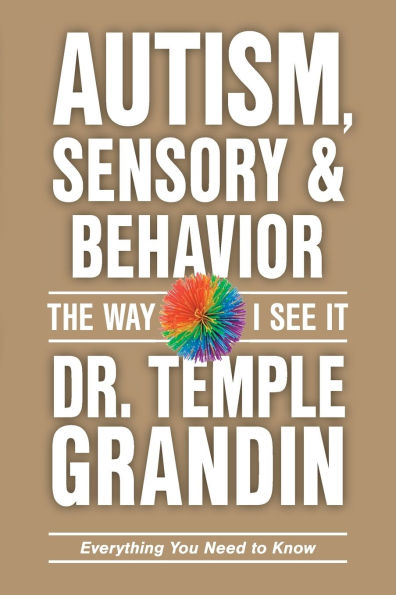Most autistic individuals deal with a variety of sensory differences, and in this book Dr. Grandin sheds light on the best ways for them to adapt and thrive. In these helpful pages, Dr. Grandin offers do’s and don’ts, practical strategies, and try-it-now tips, all based on her insider perspective and extensive research.
She argues that individuals on the autism spectrum must focus on their overlooked strengths to foster their unique contributions to the world. She has packed a wealth of knowledge into this book, which serves as an excellent reference resource for parents, educators and caregivers on how to manage sensory issues.
Topics include:
- How to deal with sensory overloads, withdrawals and sensitivities
- Learning how to help desensitize individuals to sensory stimulations
- Discovering simple strategies that can have amazing effects
- Best practices for incorporating sensory integration
- And much more!
Most autistic individuals deal with a variety of sensory differences, and in this book Dr. Grandin sheds light on the best ways for them to adapt and thrive. In these helpful pages, Dr. Grandin offers do’s and don’ts, practical strategies, and try-it-now tips, all based on her insider perspective and extensive research.
She argues that individuals on the autism spectrum must focus on their overlooked strengths to foster their unique contributions to the world. She has packed a wealth of knowledge into this book, which serves as an excellent reference resource for parents, educators and caregivers on how to manage sensory issues.
Topics include:
- How to deal with sensory overloads, withdrawals and sensitivities
- Learning how to help desensitize individuals to sensory stimulations
- Discovering simple strategies that can have amazing effects
- Best practices for incorporating sensory integration
- And much more!

Autism, Sensory and Behavior: Everything You Need to Know
180
Autism, Sensory and Behavior: Everything You Need to Know
180
Product Details
| ISBN-13: | 9781963367171 |
|---|---|
| Publisher: | Future Horizons, Inc. |
| Publication date: | 07/01/2025 |
| Series: | The Way I See It |
| Pages: | 180 |
| Product dimensions: | 5.90(w) x 8.90(h) x 0.40(d) |
About the Author

